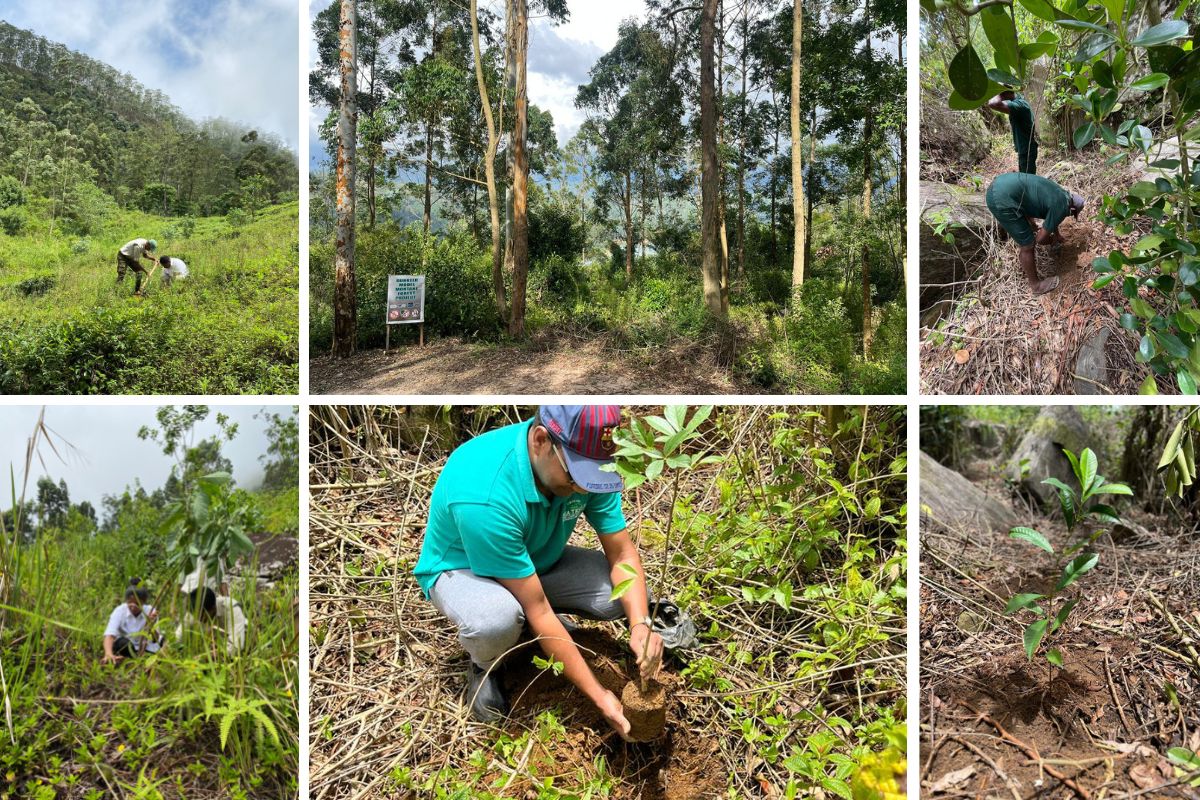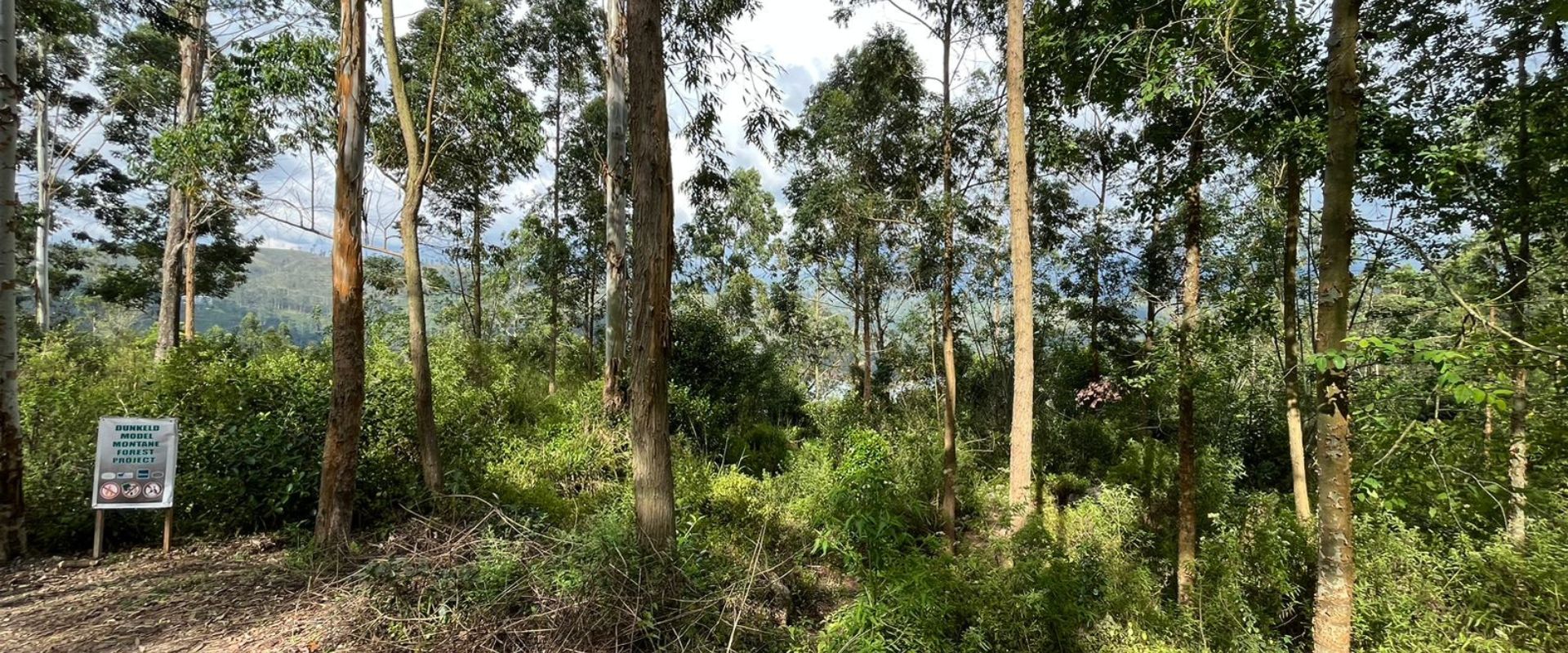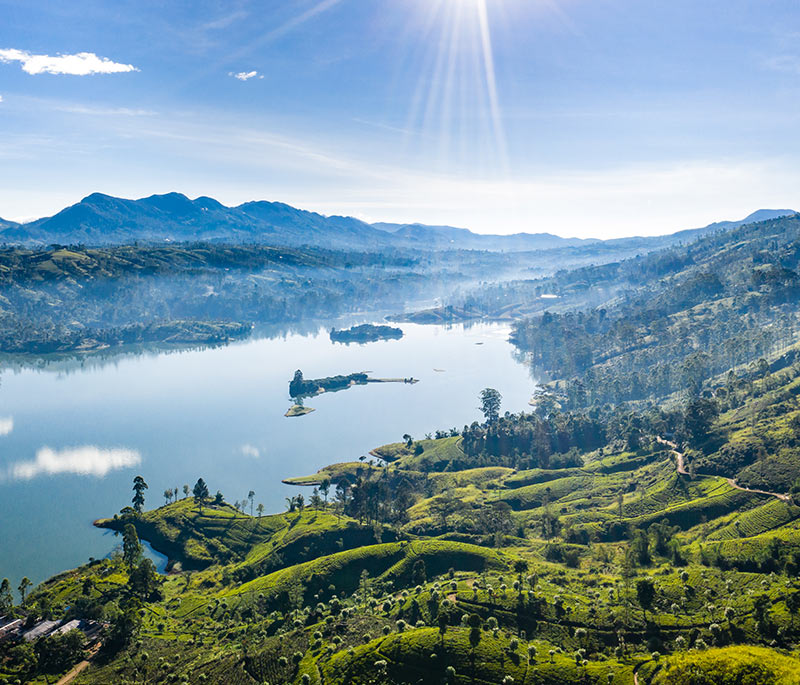Restoring Ecosystems | Dunkeld Model Montane Forest
At the heart of the Central Highlands, within Dunkeld Estate lies approximately 11.6 acres of historical tea lands that have degraded over time. Overrun by invasive species the land however displays effective water catchment capabilities due to its location and topography, and despite the many invasive species, the diversity of flora and fauna is fairly high. Some species such as leopards, barking deer, sambar, wild boar, jackal and many native, endemic and migratory birds utilise this patch of land as a breeding and feeding ground. This site has been identified as a common ground for fishing cats as well; identified through scat.
While we experience a drastic decline in nature, governments across the world have recognised the need to prevent, halt and reverse the degradation of ecosystems worldwide for the benefit of both people and nature as the UN Decade on Ecosystem Restoration. In turn, this initiative can help combat climate change and prevent a mass extinction. The 2021–2030 timeline underlines the urgency of the task.
It is in our best interest to revive the natural world that supports us through the numerous ecosystem services vital to our survival. While a decade might seem like a long time, these years will count the most in making necessary changes. Last year, we made the commitment to restore this degraded ecosystem to act as a model forest. It would not only serve to add to the biodiversity of the area and ideally in the future, contribute to carbon insetting within the Dilmah value chain but also act as an incredible guest experience. Restoration would include the creation of a cascading pond system, invasive species removal and replacement with native species, walking paths and birding stops.

Making Earth Livable
Forests act as a nature-based solution for climate change which can contribute over one third of the climate change mitigation needed by 2030. Conserving and restoring forest landscapes is not only a cost-effective way to mitigate climate change, but it also means that many other benefits are provided to local communities and wider society. Healthy forests filter sediments and pollutants from rainwater runoff, protecting the quality of rivers and lakes, including drinking water sources.
Following restoration, the proposed site will create a suitable environment for the return of many endemic flora such as wildflowers and orchids that are currently under threat of disappearing. Given its location, the restoration here will create a biodiversity corridor between other fragmented tea-scapes to the Peak Ridge, thereby improving human- wildlife coexistence. Additionally, it will not only reverse biodiversity loss in the region but also increase the ecosystem services provided by healthy forests while significantly contributing to the Sustainable Development Goals 13 (Climate Action) and 15 (Life on Land).
Ecosystem restoration is one of the most important ways of delivering nature-based solutions for food insecurity, climate change mitigation and adaptation, and biodiversity loss. It won’t be quick or easy, and it will take deep changes to everything from the way we measure economic progress to how we grow food and what we eat. But the beauty of ecosystem restoration is that it can happen at any scale – and everyone has a role to play. – UNEP
In time, the development of this site will also provide a valuable benefit to the guest experience offered at Ceylon Tea Trails. By developing birding hideouts, walking paths and areas for ‘forest bathing’, guests will be able to experience the wonders of a montane forest quite literally in the backyard of their bungalow.
We hope to engage the local communities and school children, and eventually the site will provide a key educational experience to create awareness and advocacy on the need for conservation and human-wildlife coexistence.





